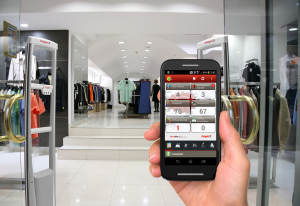For retailers around the country and business in general, customer satisfaction is very important nowadays. The internet has made customer complains known worldwide. An uploaded video can go viral without the company having control over it, and the damage it can inflict upon the company can be horrendous. What can you do to assure that you take customer complains or suggestions seriously? What can you do with them once you have the data? For more about this topic follow the links below.
5 Cool Things You Can Do With Customer Feedback
Join us at Entrepreneur magazine’s Growth Conference, Dec. 15 in Long Beach, Calif. for a day of fresh ideas, business mentoring and networking. Register here for exclusive pricing, available only for a limited time.
Time was when getting feedback from a customer was a process so complex, it was akin to getting blood out of a stone. Thankfully, we don’t live in those times.
Today, not only is feedback nothing more than an email away, but customers actively come to you with suggestions and ideas. In fact, theylove sharing their insights with you because they understand that the more feedback they give, the better your product becomes.
However, most of this feedback just ends up cooling its heels in hard drives, which is, well, tragic, considering all the good it can do. A motivational tool, a wall of love. . . the ideas are limited only by your imagination. Here are our top five cool things that you can spin off with customer feedback, to wow your customers and your own employees.
Are Customer Reviews Promoting Your E-Business Like They Should?
Like it or not, customer reviews are a fact of life — and their impact on your business is huge. Columnist Jeremy Smith explains how you can use this to your advantage to promote your brand.
Unless you’re just back from an extended stay in some parallel universe, you know that customer reviews are valuable to e-commerce and increasing online conversions. Even negative reviews can be helpful to you, as the purveyor of a product or service.
The value of online customer reviews can hardly be overstated, though perhaps it approaches being over-documented.
4 Ways to Make Your Customer Satisfaction Surveys Actionable
To truly understand customer feedback, you need to ask an important question: “Why?” The only way to do that: follow up.
“Please tell us how we did.”
A question like that can roll the eyes of even your company’s biggest fan.
For years, customer satisfaction (CSAT) surveys have been the bread-and-butter strategy for getting feedback.
But the big question is, are these surveys useful?
Many companies are frustrated by their surveys, in large part because they don’t know how to derive consistently actionable insights from the feedback they collect. Thousands of responses go into a database, emerging only as a graph that nobody wants to admit doesn’t drive any change.









